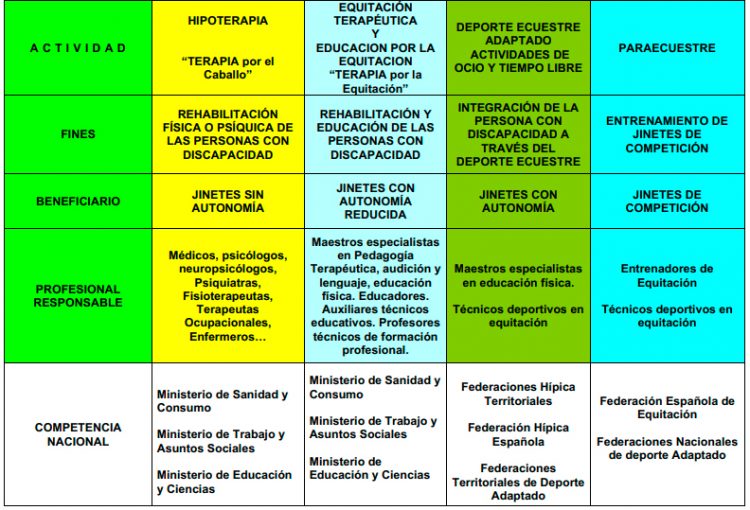Based on the terminology used in the sector, the Equine-Assisted Interventions, Equine or Equestrian Therapies, are all those activities aimed at the rehabilitation or assistance of people with functional diversity and/or in a situation of vulnerability in which the horse and the environment in which the activity takes place become the facilitating means of the therapy to achieve the objectives proposed for each user or group.
The final objective of therapies is to improve the quality of life of the beneficiaries, favouring their autonomy and social integration.


